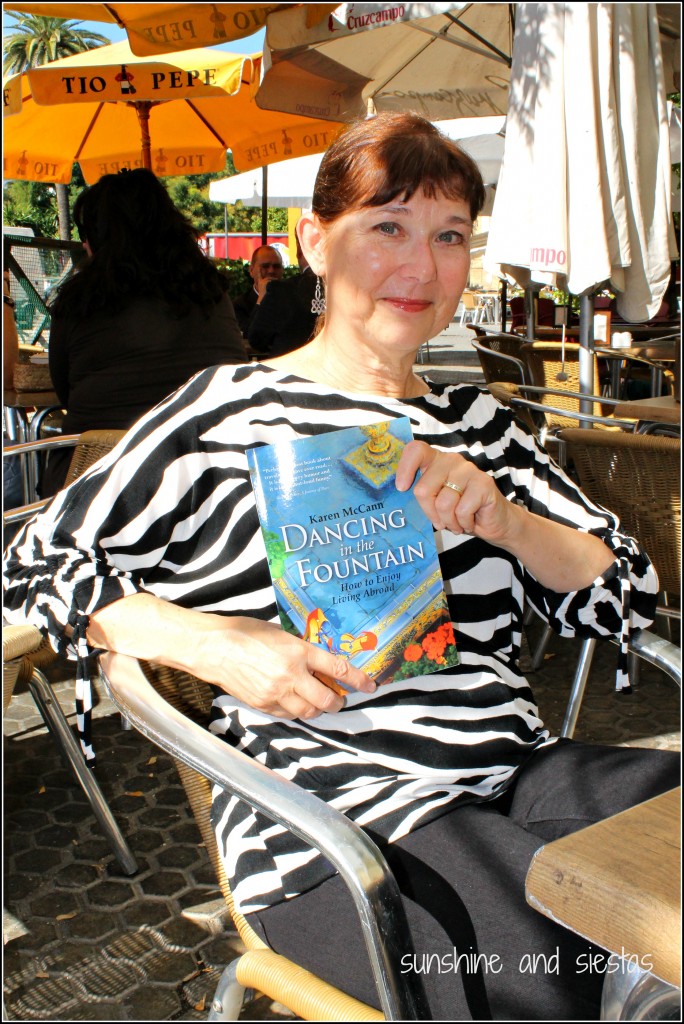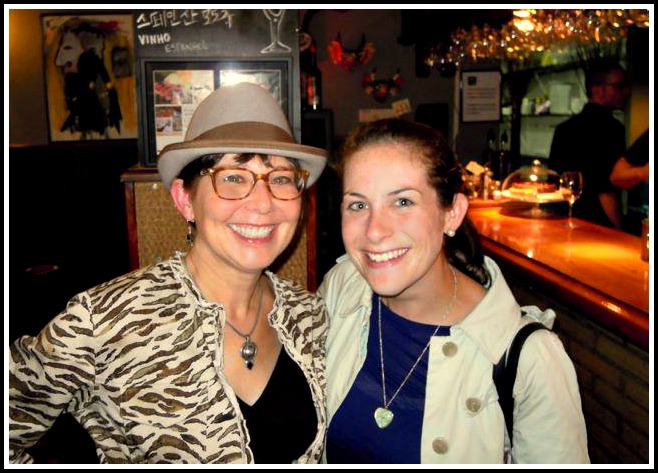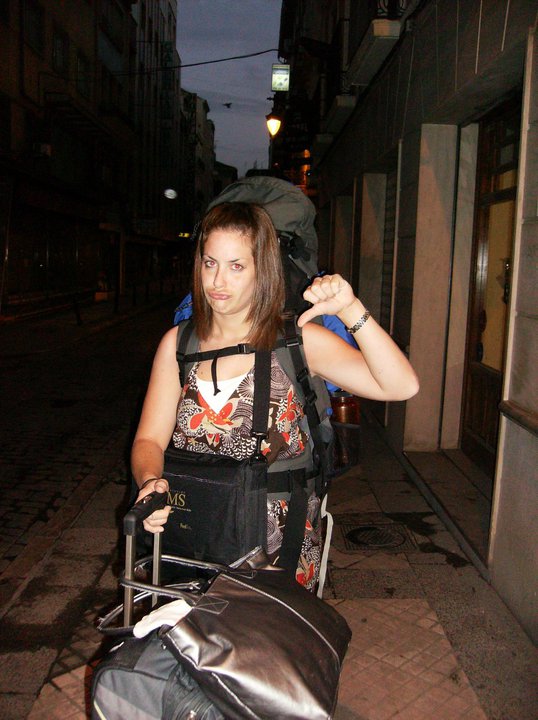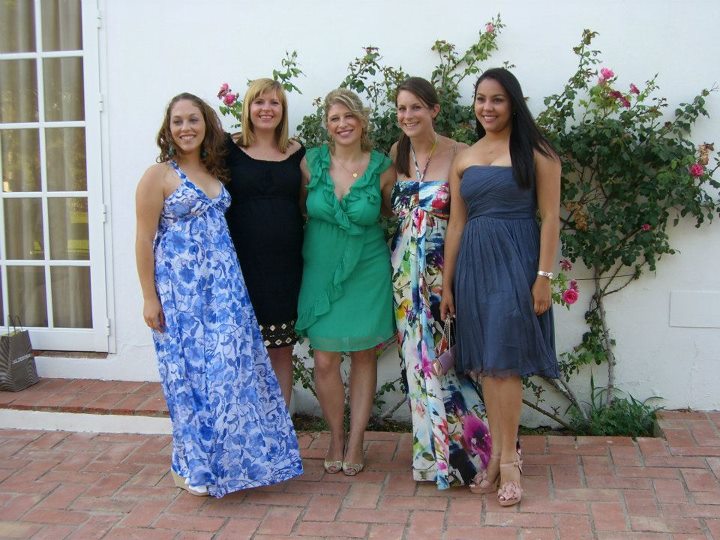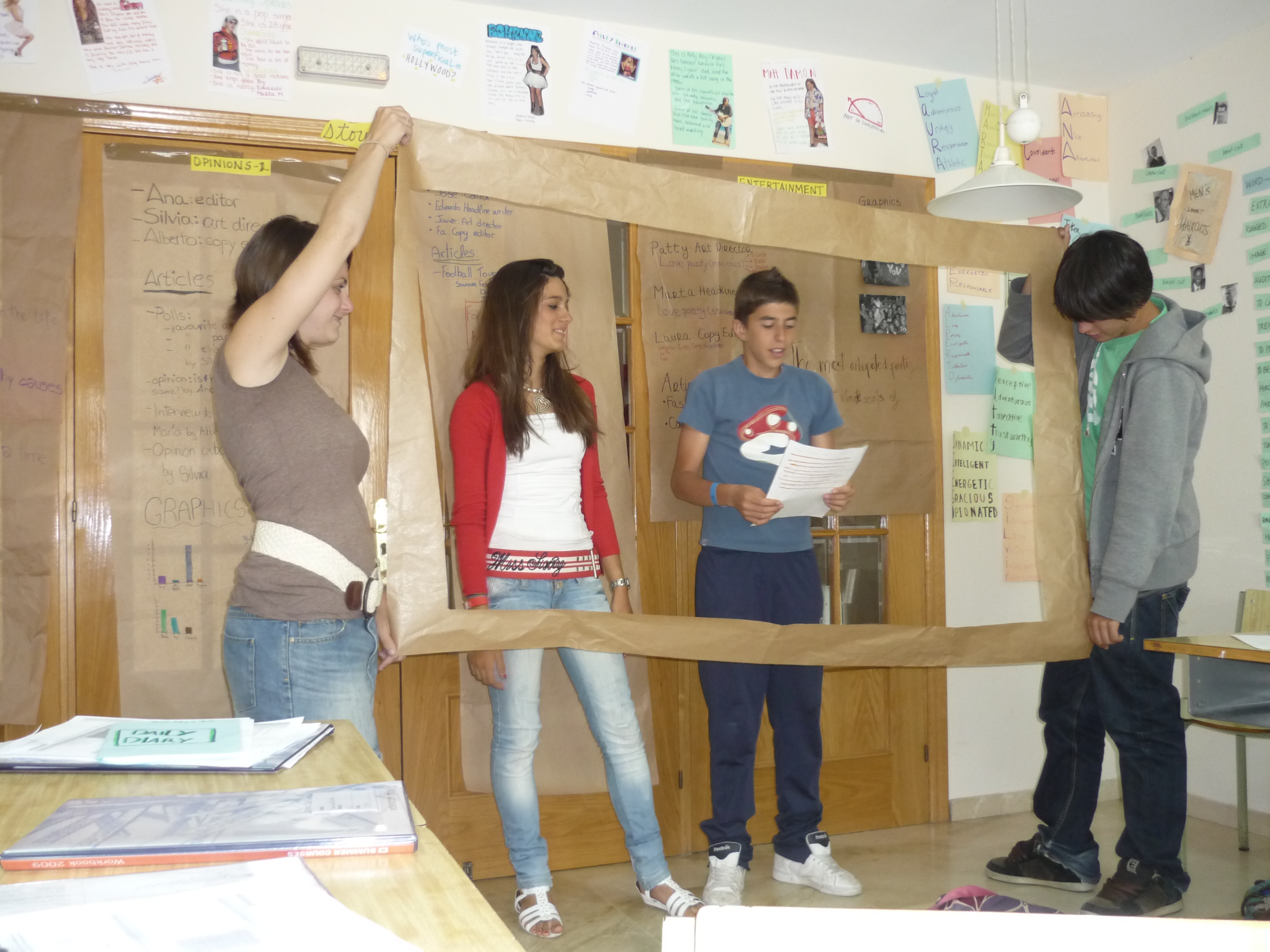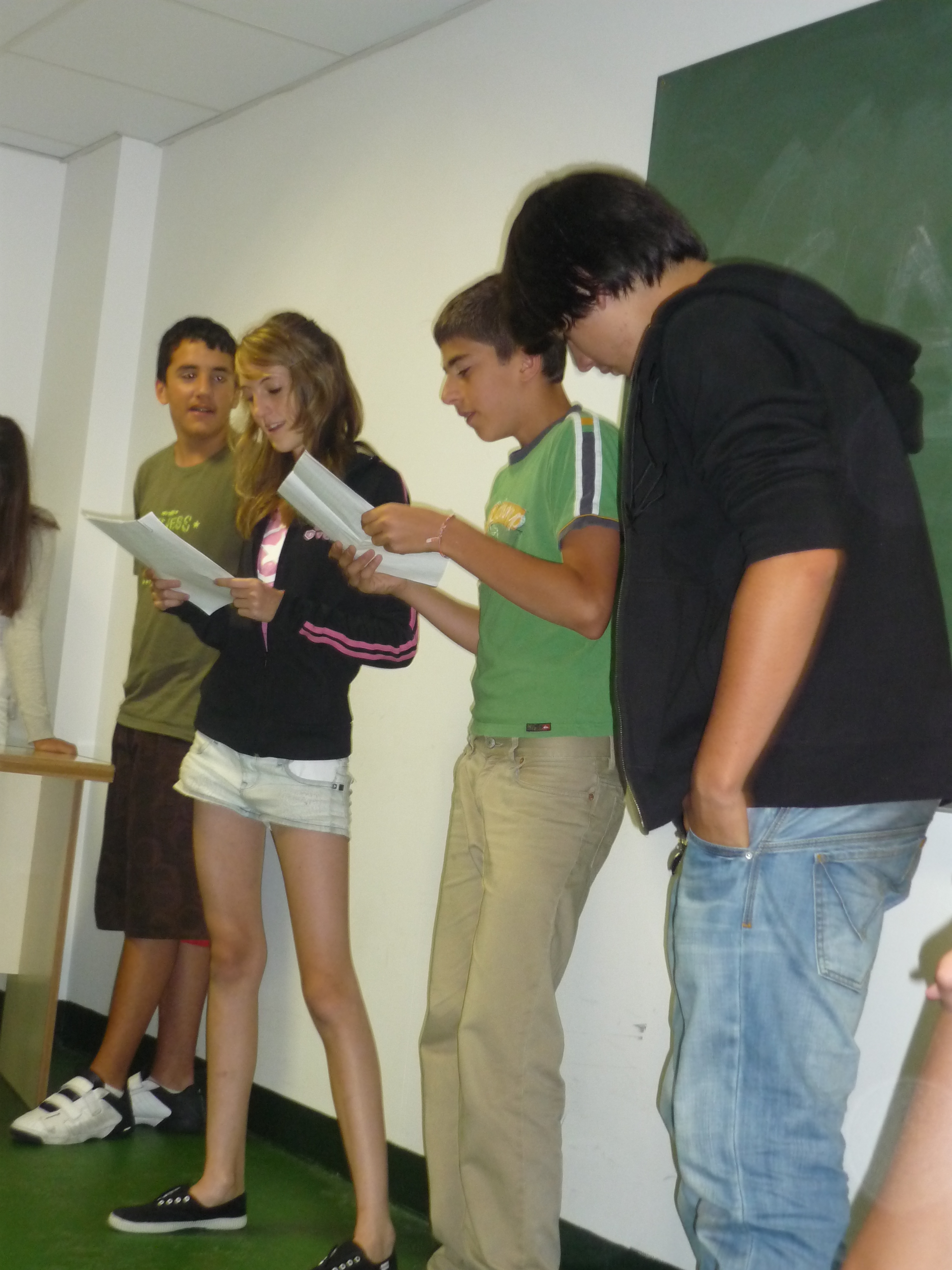I’m five minutes early, and there’s just one table left. It’s in the sun and cramped between two groups of German travelers. Karen strides in with just a moment to spare, wearing her signature animal prints. While there’s a gap in age between us, Karen is the type of friend you can have who personifies “Age is just a number.”
I’m eager to catch up with Karen over coffee and talk about her new book, Dancing in the Fountain: How to Enjoy Living Abroad. I devoured the book on a trip this summer though the Eastern seaboard, often subjected to gut-busting laughter and the wise head nods. The book was, in short, delightful.
As someone who loves travel books, Karen’s story of how she and her husband, Rich, moved to Seville is what Maria Foley calls a “love letter to the Andalusian capital.” Indeed, Karen captures the essence of Seville – its people, its food, its quirks that drive every single one of us crazy, all while deepening our love for this enchanting place. The perfect book for dreaming about getting away, of starting over in a new country and making it all work.
As we are getting ready to part ways, I reach into my bag to find my wallet is empty. In an oh-so-Spanish move, Karen shoes my hand away and offers up a five euro note. “This will more than take care of it,” she says with a slight smile.
After getting back home later that day, I write my friend to apologize again about the coffee. Her reply is quick and telling: It’s happened to all of us.
Just like your friend from toda la vida might say on any other sunny day in Seville.
The Contest
Karen has graciously agreed to donating a paperback copy of Dancing in the Fountain: How to Enjoy Living Abroad to one of my readers, and I’m willing to ship it anywhere.
In order to win, I’d like you to tell us, in 25 words or less, why you’d like to live abroad, or why you chose to if you’re already here. You can earn more chances to win by following Karen and I on twitter or liking our Facebook pages, but we’re both interested in hearing what you have to say about packing up and moving to unknown lands.
a Rafflecopter giveaway
Contest begins today and will run two weeks. I’ll send the winner, who will be generated randomly, the signed book to any corner of this great big Earth. But wait! I’m also going to give away a $15 Amazon gift card to the reader with the best answer, judged by and agreed on by both Karen and me.
For more information about Karen and her book, visit her webpage or follow her on twitter at @enjoylvngabroad. If you’ve read this book and enjoyed it, let her know! You can also find the book in both Paperback and Kindle version here: Dancing In The Fountain: How to Enjoy Living Abroad.
